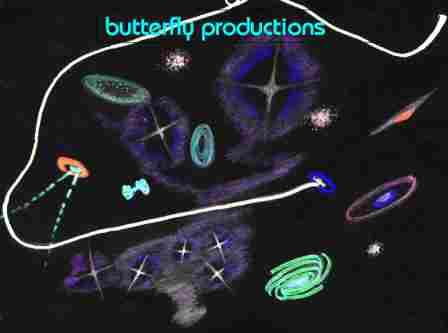Twin Earth Extra-Terrestrials, Terrestrials, Monsters, & Giants

Notes on The Demon Head: Gorgon, Spider-Scorpion and Master Parasite, and Nergul Client Species
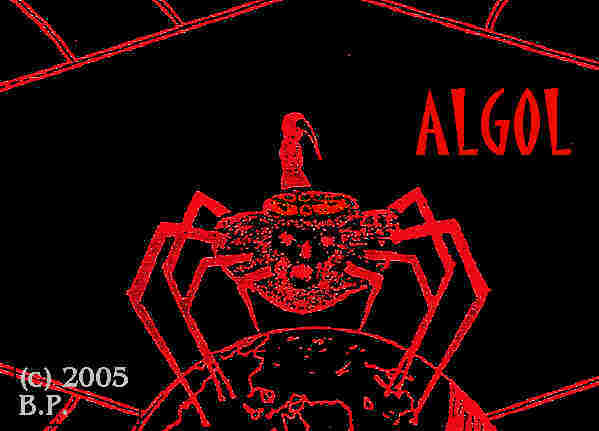

Displaced from their star system when Wormstar-Retrostar destroys it, the Algol were one of the few civilizations that escaped extermination and then went looking for a new home.
When they contact Earth II, they find it under siege by yet another Stone of Fire. Already badly scorched by the first encounter, they cunningly devised means to cooperate with the destroyer.
ALGOL derives from the Arabic expression, "Al Ra's al Ghul," which means demon's head. It refers to the lost star system of Algol in the Perseus Constellation and was pictured by the Greeks as the head of Medusa the Gorgon. "Ghouls," in Middle Eastern fables are malevolent demons. They are portrayed as chillingly wicked and predatory phantoms or shadows, quite like vampire bats that attack unsuspecting and sleeping human hosts, who thus "entertain angels unaware." Paralyzing their victims with a venom acting like a sleeping potion, they return night after night to suck blood, gradually bleeding their victims to hollow, white husks until they die. Their effectiveness lies simply in their stealth and "invisibility."
The Algol consisted of three allied species--Gorgons, a parasitic crystalline lifeform, and a spider-scorpion, as well as a fourth client species, the Cygnusians or Nergul. Except for information supplied by the chronicles, we would know nothing about these lethal species--which are all the more dangerous for bory, and Kleptoparasitism:
KINGDOM
Animula
PHYLUM
Chelicerata
CLASS
Arachnida
At this point, there is no division, as on Earth, with the SUBCLASSES Aranae and Scorpiones dividing and developing along their respective lines into the spiders' SUBORDER (Araneomorphae), then the respectives FAMILIES of Salticidae (for spiders) and Varjovidae (for scorpions), followed by the spider GENUS Salticus and the scorpion GENUS Syntropic. The SUBCLASSES, on Kastor, merged or never divided, in the case of Algol's spider-scorpion. Differentiation stopped when the unique spider-scorpion arrived. It is not known, since there are no records available to Earth II, whether the spider-scorpion, utilizing its parasite's social and telepathic abilities, eliminated every other contender in the Class of Arachnida or whether the Algol parasite allowed this one species to exist and eliminated the others. It, with its master parasite, exists no longer on Earth and can only be found in the binary star system of Algol. Judging from the highly predatory nature of both host and parasite, however, it is probable that they wiped out every species on their adoped home planets except, of course, the more powerful Gorgons. Not that the Algol-Gorgon, spider-scorpion, and master parasite were content to remain on their planets and be incinerated by a supernova. The Algol "borrowed" from an allied client species, the Cygnusians, or Nergul, the necessary spacecraft and propulsion systems enabling Gorgon, host spider-scorpion and parasite to reach as far as they wanted into other star systems that still eluded destruction by Wormstar. To begin with the Gorgons had much contact with a very pacific, quadropod, herbivorean civilization in a neighboring star system called the s-Hapsil, which bought their products. As for the Gorgons' allied species, they adapted easily to a kleptoparasitical role in regard to the s-Hapsil rather than act overtly aggressive. Like the remora clinging to a shark, the Algol master parasite, acting "behind the scenes," reaped some benefits it might not have had if it had acted aggressively. The alliance would never have come about except that the s-Hapsil had already discovered the use of mulberry-type-leaf caterpillars for producing silk. Unfortunately, the highly-favored silk was difficult to produce, and there were not enough mulberry leaves on both of the planets to satisfy the number of mulberry caterpillars needed to produce the silk the s-Hapsil wanted. Also, they did not stoop to manufacturing. It was with pleasure they turned to the silk-producing hosts of the Algol, who ordered them to make garments with their silk that were perfectly tailored to the s-Hapsilís gigantic bodies. Even though the spider-scorpions were also extremely small, they had the advantage over mulberry caterpillars by being so numerous. Entire planets in the home star system were filled with them, so that they could easily supply enough silk to keep the s-Hapsil well-clothed and contented. Commensal and kleptoparasitical animals steal and feed on what others discard. For their silken garments, the s-Hapsil unwittingly allowed the Algol spider-scorpion host access to certain plasma sources on their planets. This source dried up immediately when the s-Hapsil lost their star system to the invading Wormstar. The Gorgons, as allies, were defeated and thrown out of the s-Hapsil territory; denied access, they and their scorpion-spider and its controlling parasite were obliged to return to leaner pastures on their own planets. Soon coming under attack as well, the Algol were all the more inclined to get away while they still could rather than vainly resist and be overwhelmed.
Part II, Name, General Characteristics, Aural, and Chemical Communication, Physical Description of the Algol host scorpion-spider:
CLASS Arachnida;
1. Name
Perseidica labyrinthica pygmaea
2. General Characteristics
A pygmy labyrinth spider, the Algol host was a noctural hunting spider, catching prey by stealth and cunning. It was a cave or burrowing species, with eight mostly vestigial eyes. White, cold-blooded, blue-blooded, book-lunged, silk-producing, long-lived (three or four centuries was about the average for each individual), the Algol host was perfect as a conveyance for the Algol, which communicates telepathically and uses the host's body fluids for food.
3. Communication
In social discourse, the telepathy of the parasitical Algol aided thehost in communication. Highly civilized in a sense, the Algol devised for the host a complex system of sounds, not to mention scents. Like many species of spiders, they have long, sensory hairs. These aid in detecting and receiving vibrations and sounds, but the Algol have adapted them to unique uses. The Algol spider-scorpion, programmed by the controlling parasite, produced remarkable and diverse sounds from almost every part of their bodies, so that telepathy was really not needed, since all the language arts required for building an advanced civilization could be satisfied by sound transmission. The routine-loving spider-scorpion, in smaller groupings, seemed to prefer sound-transmission, since it may have formed a more respected, traditional role. However, there was an important area of spider-scorpion life that is not aural-based alone. Individuals communicated a desire to mate by combining aural and chemical language--a twist engineered by the ingenious parasite.
Communication of meaning occurred when a. jaws made a hissing sound b. leg on leg, or palp on jaw, jaw on jaw, was rubbed c. an appendage was rubbed on abdomen d. using a file-end scraper system on opposing parts of an appendage e. any appendage was rubbed on another, in such a way as to produce a certain series of vibrations, each differentiated or pitched in length, intensity, tone, etc. f. sex scent glands were activated (chemical communication utilizing a scent closely akin to a very sweet rose fragrance; this soon turned to a turpentine-like odor, which was strong enough to pollute and degrade whole eco-systems, driving out all other forms of life).
The tough, exterior exoskeleton was vital to sound-language transmission, since a softer skin produces little or no sound. Sound transmission served a variety of uses: communication of information, courtship (though egg-bearing is the responsibility of the Algol spider-scorpion queen and her "lady" attendants), warning signals, and so on. It might also be mentioned that the matriarchal and royal society of the spider-scorpion was mimicry, a mirror-image of the Algol parasites'.
4. Physical Structure, Reproductive System, Courtship and Mating of the spider scorpion
Along with the standard eight legs and a hard exoskeleton, the spider-scorpion was made up of the cephalothorax--composed of brain-carrying head and thorax--joined by a narrow waist to the abdomen. The crablike front end bears the eye, jaws, and venom glands and ducts. Large muscles in this part aid the throat and sucking stomach which ingests the enzyme-dissolved organs of its captive prey.
The abdomen was globular, with openings for the book-lungs. At the rear was the anal tubercle and finger-like spinnerets for producing silk secretion, and scorpion tail along with venom glands and ducts. This part also contained the major internal organs--heart, main artery, and the lungs, as well as reproductive organs.
Female Algol scorpion-spiders were too civilized to cannibalize their mates, as is quite often the case with Arachnids. The sexes were quite evenly paired in size, so the malewas not at any disadvantage in that respect. The only danger to the male was his mate's venom, administered by the jaws and scorpion tail. The Algol scorpion-spiders were not immune to their own poison. In the frenzy of mating accidents were liable to happen and did occur often. But antidotes were always on hand throughout the society, thanks to the parasite, so that there was very little loss of life by a slip of a tail or a bite on some part of a partner.
Since Arachnids and the Algol, both scorpion-spider and master parasite, gave no evidence of possessing emotions, relations between host and parasite were very much like relations between two machines or computers operating in tandem. Only in mating and courtship did spider-scorpion sexes show other than polite or social interest in each other, and then it is a highly organized and ritualized activity. If computers could relate on a "social level," it would be much the same as what went on between the Algol sexes. That the individuals involved feel love or, at the least, friendliness and gratitude toward each other was not possible for spider-scorpions to know. Since the females mated with all comers, and the males held to no single female any longer than the period of copulation, it is not likely any monogamous or sexual bonding and pairing tendencies between two individual scorpion-spider existed. It is expected that sex relations of the Algol master parasites were little warmer.
The basic reason for lack of bonding must be that the spider-scorpion, like the comptroller master parasite it harbors, were never an individual, properly speaking, but a species acting in concert on everything. Sex occurs between individuals, but all females were held in common, so that mating is promiscuous and on-going throughout the society. The production of sufficient population to maintain sufficient host populations for the parasite was easily attained, so the laying of fertile eggs was early on reserved to "upper classes" of spider-scorpions. The whole society was allowed to mate, but lower-ranking "commoner" females were sterilized soon after birth. This too may well be a reflection of the master parasites' social order.
It is necessary to question the conspicuously elaborate aspect of the spider-scorpion courtship. If its sex relations were completely mechanical and instinctual, why were they not reduced to the simplest and most basic functions? Again, laws of biology were involved, which in the case of the spider-scorpion produced complex forms of courtship for the purpose of strengthening the social organization. Society was the beginning and the end of everything that the parasite did, and so its host must follow suit. Sex relations were, therefore, essentially socialized. Females took multiple partners. So did the males. It made no difference how many times a female mated or with whom. The same applied to the male. The only significant thing, to the standpoints of host and parasite, was the socialization of the entire process.
Part III, Social Arts and Social Organization, Prey Capture and Feeding Mechanisms of the Algol Host Scorpion-Spider and Master Parasite
l. Social Arts
Spiders on Earth II, for purposes of warning or alerting and inviting a female in courtship to mate, produce percussive sounds by drumming on body parts or even the ground. Also, certain Earth species exhibit social characteristics of a very rudimentary or weak development. Here the comparisons pale before the social development of the Algol.
There was no need to deal here with social arts in particular (though we have touched upon them in the matter of sex and courtship) since the Chronicles are the best way for the reader to learn about them, insofar as they are applied to mastering a plasma source for the Algol host spider-scorpion, the planet of Earth II. But in a nutshell, the spider-scorpion's social arts had a twofold purpose: internal socialization within the society and successful predation outside the society.
2. Social Organization
The spider-scorpion was organized as a collective, a highly developed "socialist" state, with authority vested in a queen and her "politboro" of attendants. Again, this is the creation of the parasite and had no independent function at all. With the Algol monitoring everything, the top of the social pyramid saw to it that the society was functioning, with the proper bureaus, agencies, and committees, all with their supervisors, workers, and auditors--in other words, all the functional roles and parts necessary to sustain not only their society but, most importantly, the well-being of the parasite. The members of the spider-scorpion society, it must always be recalled, existed to serve the master parasite, the true Ghoul or Shadow, not themselves.
Since the spider-scorpions were a predatory society, food had to be found outside the society. Plasma sources, natural and artificial, within the society were soon exhausted, but since the spider-scorpions were aggressive as the parasites they carried, it was never thought to be a problem. With the master parasite's intelligence and numbers, allied to the host's superb social organization, the two always felt assured of their ability to overcome anything in their path. VENI, VIDI, VICI was always their experience when dealing with other species. As for Wormstar, they were not dealing with a species, since it was more a force of nature to them than something living. This tallies perfectly with their Gorgon overlords.
3. Feeding Mechanisms and Prey Capture by Host and Parasite
The spider-scorpion, early in their history, must have attacked individual prey, probably other anthropods, and utilized jaws and powerful digestive enzymes to reduce their victims to a liquid they could then easily suck up.
All the mechanisms of spinning a web to capture the prey, immobilize it with poison, dissolve its internal organs with enzymes, and then suck up the prey as liquid food were present in the modern spider-scorpion.
Highly advanced in sophisticated science, the Algol master parasite probably had no use for such mechanisms any longer since they were turned to reducing whole planetary populations, animal and human, to plasma which can be easily piped and consumed by their hosts. The subsidiary host's silk-producing spinnerets were of no longer of functional value in capturing prey, as that function was taken over by the vast and unsurpassed Algolian intelligence of the master parasites.
Again, the Chronicles describe prey capture by the fourfold combined forces of Gorgon, Cygnusian, spider-scorpion host and master parasite, but it is worthwhile to remark about the extraordinary qualities of these behaviors.
No Arachnid species on Earth II was known to have developed to the point where they achieved intellectual and technological parity with human civilization. That Algol has advanced so far as it has was due completely to the Gorgons and the master parasite--the parasite providing the powerhouse of intellectuality and, like its host the scorpion-spider, a geometrically multiplying reproductive rate.
Perhaps, when all is said that can be said, the most insidious feature of the Algol host-parasite team was not sheer numbers, or overwhelming intelligence, but their diminutive sizes. They were, to all appearances, just like the Gorgons in that they were practically invisible--and intended to remain so. The parasite ws like the porthole of a child's toy sailboat bobbing alongside the historical queen of commercial British liners, the QE2--only, that is doubling the actual size of the parasite. The host, though it compared to the QE2 when placed alongside its parasite, was still microscopic. Gorgons, having been very large beings, would normally be disadvantaged in respect to invisibility, except that they were able to utilize these two lesser species to further their own ends.
Part III-B: Gorgons
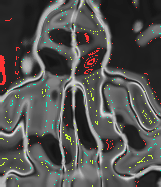
As for the Gorgons, truly, the Arabic is most apt in describing mythical ALGOL as lethal, blood-sucking shadows of the night--chilling and formidable specters. They were most effective because they operated nocturnally under the cloak of darkness. With the superb pair of scorpion-spider and parasite to serve them, the Gorgons could go anywhere and achieve mastery without alerting their victims of their presence.
The Gorgons come equipped with certain qualities that aided their predatory schemes. The word, Ghoul, does this upper echelon of "shadows" full justice. Nothing, not vampires, not army commandoes, not organized crime cartels, matched them in long-range, strategical planning, nor could any human society equal their fortitude and patience in times when quiet waiting was the best move. Match these qualities with a steady, relentless, "impartial" malice that contains not one grain of pity or feeling for the suffering victim, and we may possibly approach with our human comprehension the dark and phantasmagorical composite thing that is tentatively introduced to us in the ancient term, "Algol."
Part IV, Algolian Parasite; the Mystery, Definition and Parallels, Transmission, Effects, Treatment, and Characteristics
1. The inorganic population of the Algol community is still a mystery to science are are, therefore, not properly or scientifically named and classified as with organic genera. Traditional science has yet to come to terms with this phenomenon on Earth II and what we know is based on the Chronicles. On Earth II, as far back as the 20th Century, epidemiologists' researches in virilogy discovered entities beyond the virus and viroid that belonged more properly to the field of crystallography. Among them were the P-Virus, Q-Virus, on to the Z-Virus. On Earth II, before the Re-location, Dr. Chillingsworth studied the ďpandemic" destroying his government and civilization. He did not have time to explain what he actually discovered, and, anyway, it was too late to stop it. What would he have made of the Algol? They were two-fold, and one partwas crystalline rather than organic, a double-entity of a most "shadowy," peripheral existence that defies comprehension. Dead, yet not dead, existent, yet not truly existing, they constituted true phantoms of the Demon Star where they orginated; extremely difficult to examine, they showed up only by eliminating everything else, but before the "everything else" was disposed of, the "shadow" cast by it was what we are looking for. That is, where it existed, very shortly nothing else could. The presence and the effect were virtually the same phenomenon. That queer and ghastly composite is what we mean by "shadow." As it actually could not exist except for the victim; it was continually destroying its ground of being--the prey. But that inner contradiction in its physics did not seem to hinder its rate of reproduction or aggressiveness any!
The Algol parasite's crystalline aspect and microscopic size aid superbly in defying detection. As before stated, they cast only a shadow, a "signature" of themselves behind them as they slipped from view after destroying some living entity. It wasthe "mere" shadow of a substance--but the substance belonged to something other than itself which it had to assimilate and destroy in order to continue "existing." They might even defined as "toxic non-existences," which had to feed on existing things in order to achieve a sub-existence. Their toxicity was a considerable part of the syndrome that disabled, immobilized, and finally killed the infected organism. With such a variable and hydra-headed beast, it was no wonder that any vaccine devised was only partially effective. Containing a specially developed pesticide for the scorpion-spider that would not kill humans taking the vaccine, it proved useless against the parasite, which was not a true organic lifeform. The parasite could not be arrested except with a nuclear explosion which would eliminate both victimizer and victim.
2. A few parallels from virology are somewhat helpful. Despite its most tenuous hold to the existential world, excluding the pathetic host organism, the spider-scorpion, the Algol exhibited some physical characteristics of the so-called P-Virus, which was not a virus at all, though it was like viruses an infective agent. Self-replicating like crystals, the Algol were unique, however. Crystal "viruses," the Algol were, like their hosts, the spider-scorpions, social. They all showed extreme levels of intelligence approaching or surpassing supercomputers. Their closest connection to organisms found on Earth II were the Arborivrus--a family of viruses transmitted by arthropods (insects).
3. Transmission of the Algol has already been given in detail by describing the spider-scorpion host, Perseidica labyrinthica pygmaea. The Algol master parasite also seemed to favor a parasitical role. If they had left "other" species alone, they would not have been noticed, since their proto-world was one known and inhabited only by themselves, and was so microscopic an infinite number could exist without making the slightest demand on the material Universe. Unfortunately, the Algol entity was aggression, pure and simple, and for that reason showed itself of value to the Gorgons. As a predator, it could not exist without attacking prey--for it had to have prey, apparently, to be exist. War, then, was its element. But it was an unseen attacker, a clandestine war, with compaigns fought by incredible stealth, cunning, and microscopic legions "clashing by night," as the English poet Matthew Arnold once wrote, except that these are not at all "ignorant armies" fighting blindly for insane reasons. They had very intelligent, determined Gorgons directing them.
4. Invisible and unseen, the effects of the presence of infective Algol was, fortunately, highly conspicuous. In contact with the Gorgons and their expediters, almost immediate effects are catatonic conditions ("frozen" lungs or inability to breathe), obsessions, trauma, increased negativism, increased fear and dread, white, greasy skin, dilated pupils, loss of speech, loss of reason, panic, shock, extreme levels of mental and physical stress, paralysis, and about thirty others problems developed in human beings. The syndrome induced by the Algol could result in unbearable stress and pain, culminating in insanity and death, if unrelieved. Quite often, the victims even testified, just as death set in, to seeing apparitions, appearing much like the snaky-headed monster known as Medusa in Greek mythology. Was this the genomical signature of the Algol Gorgons? Or did the Gorgons show themselves to their victims shortly before their deaths? They certainly stood to gain nothing by revealing themselves at any point before.
The toxic shock syndrome induced by the two Algol "double agents" working in tandem and in double-tandem with the Gorgons inflicted a severe insult to the mind-brain and nervous system, causing a dramatic neuro-dysfunction or a neurodegenerative trauma. This insult could be instantaneous or graduated. It is over-simplifying, but the "aim" seemed to be an attack on the emotional being of the human, which, overcome, destroyed the organism as well. Terror, then, was the point by which the Algol assumes an existence denied it in the physical Universe. Unfortunately, organisms cannot function and live very long in such a condition. And so the Algol were forced to be forever on the move to find new subjects of terror. Fortunately for its host, the spider-scorpion could feel no such human emotion and were thus immune to this aspect of its parasite.
5. Treatment of the syndrome in a human being was eing so crytozoic. We have extensive knowledge of spiders and scorpions, but very little of Gorgons, which rule over the other Algol and even less of the Nergul. The Algol spider-scorpion was more amenable to comparison with species still present on Earth; for example, the spider-scorpion appeared to be the host for a much smaller, much deadlier sub-viral parasite. The parasite was not an arthropod like the host but was carried, symbiotically, by a many times larger but peculiarly passive or accommodating spider-scorpion. Comparison with Earth IIís surviving fossil record and existing species is helpful for tracing the host. But information is limited in defining the "master parasite." We may never know much about the three Algol species identified here, for they did not survive the attempt to colonize Earth II without its consent (they had a title-deed, however, but it was never ratified by the inhabitants of Earth II).
The Gorgons, being the more infamous of the "Gang of Four," are identified chiefly in ancient Greek accounts; what knowledge we have gained of their subservient and client species is given here.
The warrior-based Nergul client species, also called Cygnusians, though humanid in aspect, are just as shadowy, though their material civilization produced startling manifestations, such as spacecraft which the Algol find to their purpose in their effort to subjugate Earth to and effect emigration.
Reflecting the radical martial temperament and organization of its civilization, the Nergul warrior, who never voluntarily bathed, wore a samurai-style headdress and armor night and day, never removing it despite the stench.
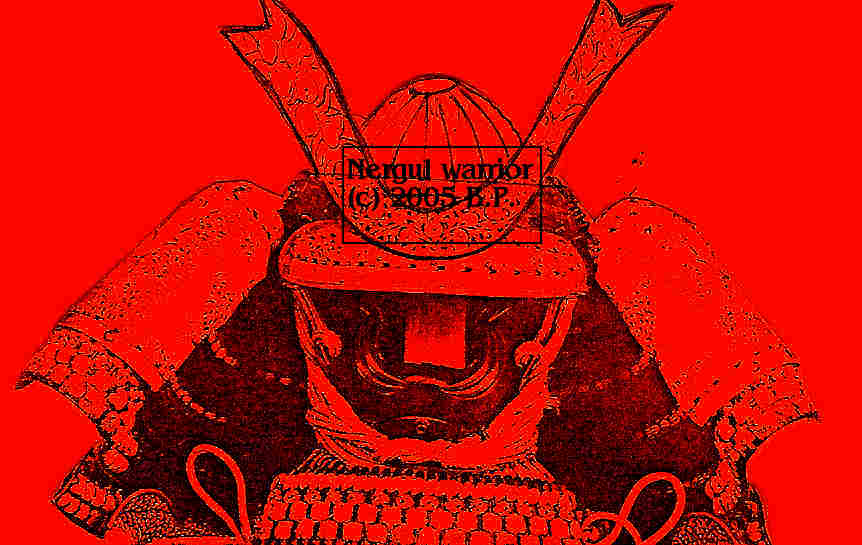
Life-long cannibals, the Nergul routinely employed the bones of their victims (vanquished fellow Nergulians, overcome in a brawl or in a test of fighting prowess) in their uniforms and armor, not to mention objects of art, for they were esthetical and refined in artistic sensibility to an extreme, and cruel and merciless to the same degree. Somehow this horrible, blood-and-iron civilization with a taste for painting water colors on flayed skin and flower arrangements set in vases of polished femor bones produced a reactionary--one who turned away so completely from the barbarism and brutality as to become a wonderful being of kindness and gentility and intelligence. But he was the lone exception, appearing in the time of Quinn Ceylon the Bluebird.
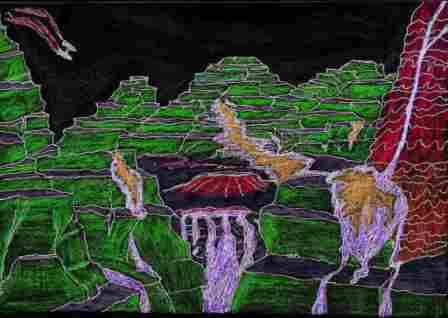
Table 2, Algol Spider-Scorpion Ancestral Groupings
The Chronicles give some detailed indications how to go about therapeutic strategies in treating the syndrome brought on by the Algol, whether inflicted instantaneously or over a period of time. One formula was a mere stop-gap "vaccine." It was not intended for long-time use as the side-effects of the scorpion-spider killing pesticide were, after years of expensive and dangerously raised levels of dosage, increasingly ineffective, toxic, and carcinogenic.
6. A study of the Algol spider-scorpion indicates extensive mimicry of its master parasite's social organization. Although there was neither gender as we know male or female, the "society" was matriarchal in a way, with a self-replicating "queen" that was solely responsible, unlike the pygmy spider-scorpion host, for reproduction. It was this aspect of reproduction that Wally used to devise a partial means to possibly stop the Algol. If all the Algol were self-replicating, nothing could be achieved. A strike, then, at the Algol master parasite's sovereign--if it could be achieved--formed a dramatic part of the objective of his strategy (see the Chronicles). The Gorgons, deprived of this linchpin in the Algolian confederacy, would be rendered virtually powerless.
7. Algolian characteristics, if not already given, were: totalitarianism or authoritarianism, aggression and predation, extreme cunning, patience, and stealth, and--its quintessential quality inspiring all it does--malevolence. By its acts it was chiefly known. The behavior of the Medusans, all three Algol species, aided by the client Cygnusians, perfectly illustrated what Machiavelli so cleverly defined in his classic Renaissance work, THE PRINCE--a seminal work of chicanery in high places in government assiduously studied by self-serving tyrants from his time to the notorious Klintons of Chocolate City (21st century, Earth). Composed as a political primer for completely self-serving and amoral despots who stopped at nothing to achieve tyrannical ends, regardless of the brutality and inhumanity of the means they took to achieve those ends, the book was originally written, not by Machiavelli, but by the Gorgon-headed Algol worlds. Nothing except Wormstar could equal the immensity and complexity of the armadas of death unleashed on a single unsuspecting planet by such species.

RETRO STAR DIRECTIORY AND LINKING PAGE
Copyright (c) 2005, Butterfly Productions, All Rights Reserved
